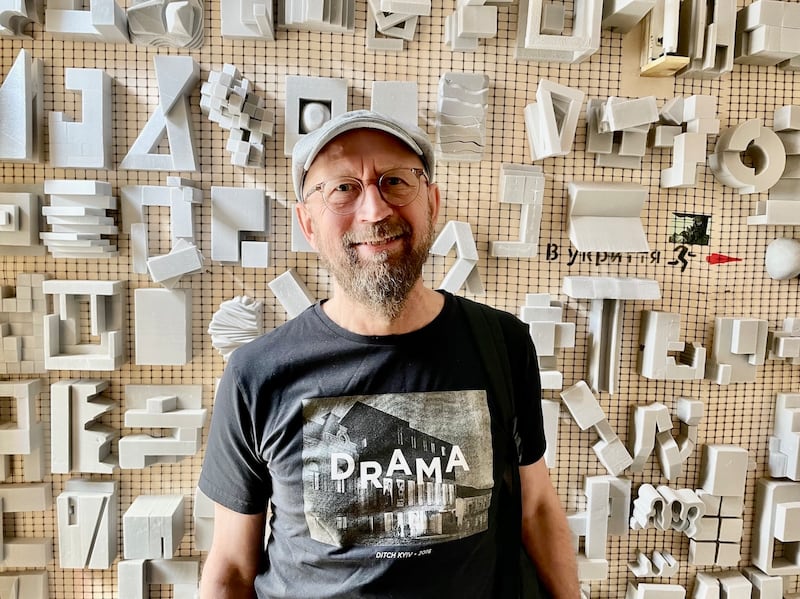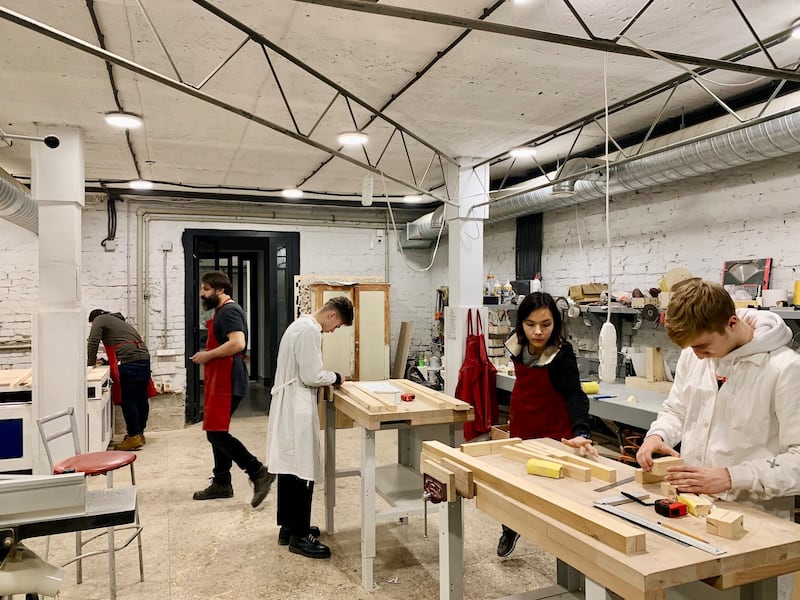In February, two years after the Kremlin began its all-out war on Ukraine, the World Bank put the estimated cost of the country’s reconstruction and recovery at almost $500 billion (€465 billion): some two million homes have been destroyed or damaged – 10 per cent of the national housing stock – along with thousands of kilometres of roads, hundreds of bridges and other infrastructure. Russian air strikes on the energy grid have only made things worse in recent weeks, halving the country’s capacity to produce electricity.
Finding the required funds will be a huge challenge. But who will dream up, design and construct the buildings of postwar Ukraine, where a brain drain of young talent could compound the death and displacement caused by Russia’s invasion?
“This is why our profession is a very important part of the future: will we be ready, what will our ambition be, and what level of expertise will we have to provide this transformation?” says Oleh Drozdov, co-founder of the Kharkiv School of Architecture (KSA).
[ Daniel McLaughlin in Ukraine: Kharkiv defies Russian bombsOpens in new window ]
The invasion forced its staff and students to flee Kharkiv, which is just 35km from the Russian frontier in eastern Ukraine, but lectures recommenced just a few weeks later in the relative safety of Lviv, a city 950km to the west, near the Polish border.
Now based in premises loaned by the Lviv National Academy of Arts, the school has about 50 undergraduates and plans to teach about 90 next year, in addition to about 20 postgraduate students. Its strong links to many schools of architecture abroad, including at the University of Limerick, have also survived the war.

“After the full-scale invasion, the school became a social formation, with everyone helping each other with transport and places to stay around the country,” says Drozdov, who established an architecture firm in Kharkiv in 1997 and cofounded the KSA 20 years later.
“A critical mass of our teachers and students ended up in Lviv, so we restarted teaching after about three weeks. It was all online at first ... but by the end of the semester it was already normal – face-to-face – again.”
As millions of Ukrainians sought refuge in Lviv or passed through the city en route to Europe, KSA students helped turn vast, commandeered halls into accommodation centres that offered an individual, private space to each family, using a system of simple and adaptable partitions created by Drozdov’s firm and other architecture bureaus.
The task forced the current and future architects to adapt immediately to wartime life and find quick and effective ways to give Ukrainians what they required from their designers at a moment of crisis.
The solutions provided were necessarily cheap and straightforward, but also reflected the KSA’s aim of developing architects who, instead of pondering the abstract, can deliver practical yet innovative and elegant responses to the needs of real people.

“For us it is always a key question: why and for whom are we doing this? What is the address for our design – literally, where would this be built? We’re not starting with the history of architecture from ancient Egypt onwards or something,” Drozdov says.
“We want all our work to be helpful for society and for a particular city. One of our principles is that we don’t do any academic project without a real client. It is always with particular people or a particular town or institution in mind ... So we always start by doing a brief together with the client, to find out their specific needs.”
The postwar needs of the school’s home city will be immense. About one million Kharkiv residents fled in early 2022, when Russian artillery on its outskirts pummelled apartment blocks, shopping centres, offices, factories and infrastructure. The population has since recovered to about 1.3 million, but the total repair bill now runs to an estimated $10 billion (€9.3 billion).
Kharkiv is already building underground schools for its children, and security will be a key factor in planning for a city that sits so close to Russian territory.
Drozdov says many other factors must also mould the future shape of Kharkiv, to reflect Ukraine’s democratic values vis-a-vis the dictatorship beyond the border. This puts him in mind of Ludwig Mies van der Rohe’s Neue Nationalgalerie, which served as a modernist symbol of freedom when it opened in 1968 near the Berlin Wall.
“This war is about surviving but it is also about choice – a civilisational choice,” Drozdov says, listing many guiding principles for the future city that range from environmental sustainability to the creation of fine public spaces and services in all districts.
“It’s about providing happiness,” he says, “and happiness has many different aspects: it is education, career-building, private life, freedom, mobility. And maybe it is also the good design of a city and its buildings.”




















